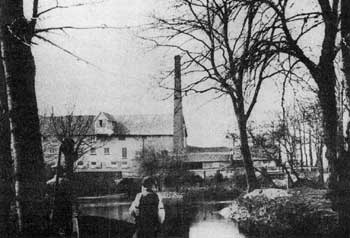 |
c.1910 |
|
Syleham Mill
River Waveney |
 |
c.1910 |
|
Syleham Mill
was a three storeys high and built of weatherboard over a brick base with
a pantiled roof. In 1779, when insured by William Mann, it was described
as brick and tiled, which means it was probably a much smaller structure.
In the 1830s the mill had two wheels powering six sets of stones using
a 6 foot head of water. During the 1860s a steam engine was installed
along with the characteristic tall chimney. |
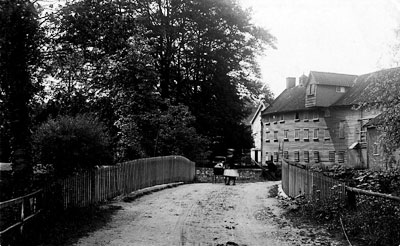 |
c.1920 |
|
Syleham water
was a corn mill up until 1839, at which time it was mainly converted to
manufacturing drabbet with the installation of several water powered looms
run from lay shafts and pulleys. However, 4 pairs of millstones remained
and the mill continued in a dual trade until 1849, when the corn milling
machinery was removed. |
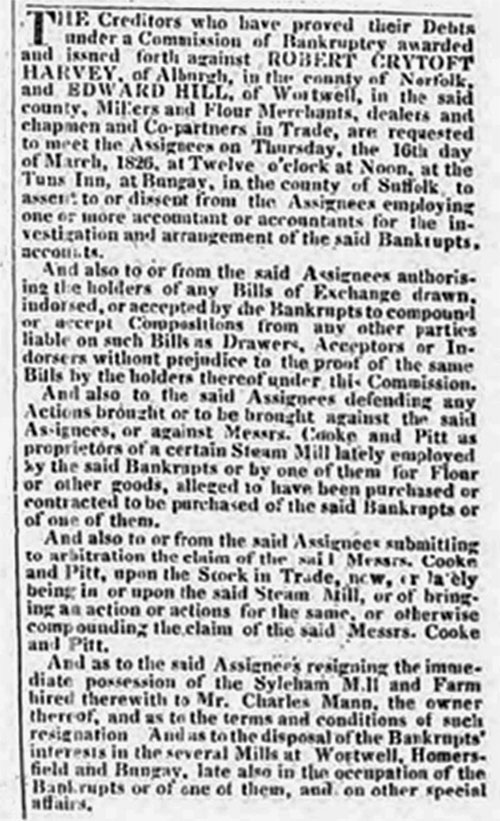 |
Norfolk Chronicle - 25th February 1826 |
|
It appears that Robert Harvey and Edward Hill were involved in the running of several mills including Alburgh postmill, Homersfield_watermill, Syleham watermill, Wortwell Mill Hill postmill, Wortwell postmill and Wortwell watermill. |
|
To be sold or let for a term of years. All those Water
Corn Mills, mansion residence, stable etc., and the Tolls arising from
a Gate near the Mill, situated at Syleham, in the County of Suffolk. The
mill, which has 6 feet fall of water, has two Water Wheels, two pit wheels,
6 pairs of stones, and all gears, capable of manufacturing 20 lasts of
wheat per week. Possession at Michaelmas next. |
|
... the entire FITTINGS of the MILL, which is converted
into a factory; including 11 French burr 4-feet Millstones, in excellent
preservation and of good quality; flour mill, jumper, vats, with hoppers&c;
face and spur wheels, hoop iron, oak shafts,and an assortment of cast-iron
and wood wheels; stone-nuts, with wrought- iron spindles, and other effects,
the property of Mr. HENRY WARNE. |
|
In 1838 Henry Warne had a factory in Mere Street, Diss where he employed 40 men, 3 women and 20 boys making drabbets, huckabacks, sheeting and shirting. Some of the men worked for up to 16 hours a day in their own homes for about 16s a week. Around 1840 Henry Warne closed the Diss factory and moved to Hoxne Mill. |
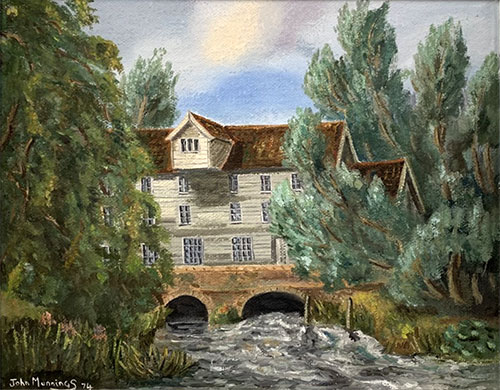 |
Oil painting by John Munnings depicting the mill c.1916 |
|
I give and bequeath unto my said wife and my son Charles
- my Executrix and Executor ALL the Machinery in the Mill of every description
also everything belonging to the Dying House Bleaching House Drying House
and Calender together with all carts waggons gigs horses and harness to
enable them to carry on the business now conducted by me at Syleham Mill
under the firm Sarah Warne & Son... |
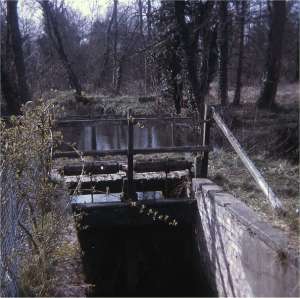 |
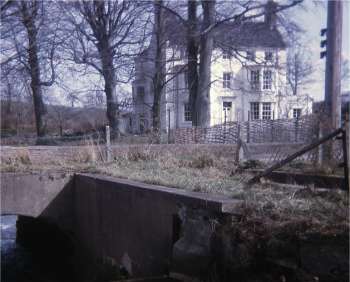 |
|
March 1968 |
Mill site March 1968 |
|
In 1872 the
mill was offered for sale by auction but remained unsold. The mill was
described as a ....substantial
structure with spacious floors, the greater part being occupied by Weaving
looms. The
Particulars also describe the premises as including an engine and boiler
house, a 16ft diameter wheel, counting house, warehouse, three pairs of
stones for grinding corn and accommodation for dyeing and drying. A building
across the road from the mill was used for drying, the floors being slatted
and it had tenters on which dyed cloth was stretched to dry. In the mill
building the looms were on the ground floor and spinning machines on the
first floor. The second floor was used for preparation purposes and the
corn mill area was at the western end of the premises. Both water and
steam power was used to drive the machinery but steam power was used only
when the water level was too low to operate the wheel. |
|
In 1899 William
Emms bought the mill and the business became known as William Emms &
Sons. In 1900 and 1904 Kelly's listed the business as Syleham Drabbett
Co., Frederick George Emms, manager. Linen & Ready Made Clothing Manufacturer,
Syleham Mills. Later William's son Ernest Richard Emms took over, preferring
the business to be known as Richard Emms & Co. Eventually Ernest Richard
Emms' son Ernest George, who had been working with his father took over
the business. |
|
The fire of 24th May 1928 was attended by Harleston Fire Brigade with Captain Robert Pipe in charge. Captain Pipe was unfortunately injured when a wall collapsed trapping his legs. Robert Pipe died in hospital a week later at the age of 57. On Monday 23rd November 1987, a citation and photograph of Captain Robert Pipe was unveiled at Harleston Fire Station by the Norfolk Chief Fire Officer in the presence of amongst others, two of Captain Pipe's grand daughters and Ernest George Emms. |
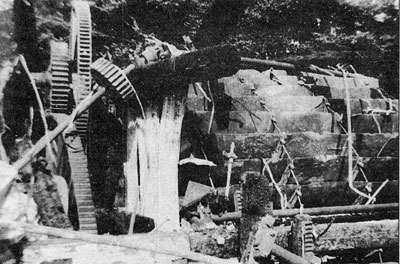 |
|
The wheel & gearing after the fire of 24th May 1928 |
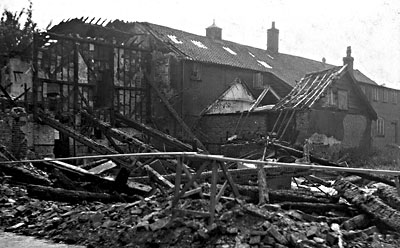 |
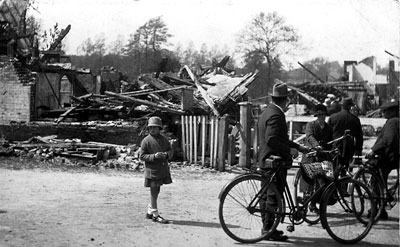 |
|
Mill remains - 1928 |
|
|
In East Anglia when the word “Mill” is mentioned we think of wind or water
mills both connected with grinding corn. In Northern England the word “mill” is associated with huge Victorian structures built to spin cotton,
originally powered by water wheel but soon converted to steam power with
line shafts carrying the power then belt drives to each machine. Hundreds
of women toiled in the noise and heat to keep the mill owners profits rolling
in. For a while Cotton milling was carried out at Syleham mill
|
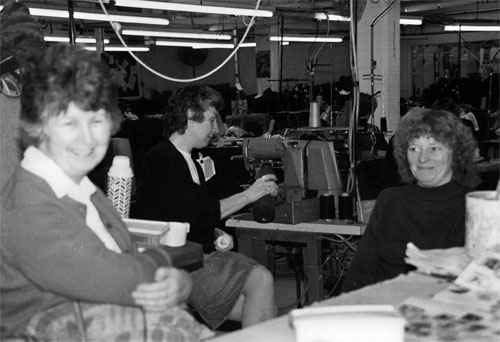 |
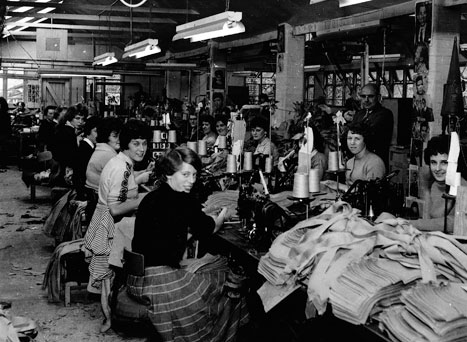 |
|
Tea-break for Margaret Wallace, Jean Gower
(with flask) and Diane Pretty c.1965 |
Machinists at work. Manager
Mr. Nunn overseeing the work. Margaret Marjoram in foreground c.1965 |
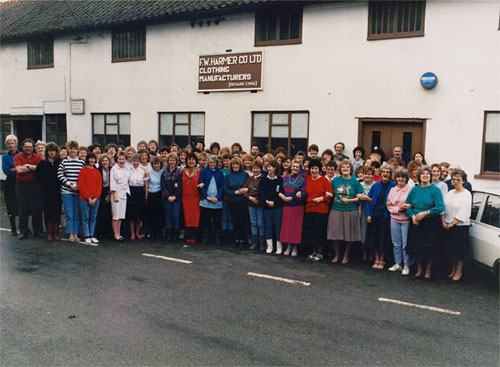 |
|
Staff photo at factory closure December 1989 |
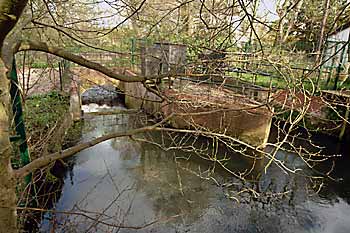 |
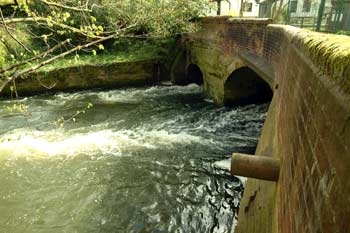 |
|
Wheelraces 11th April 2004 |
Tailraces 11th April 2004 |
I've been tracing my distant relatives in Norfolk & Suffolk. |
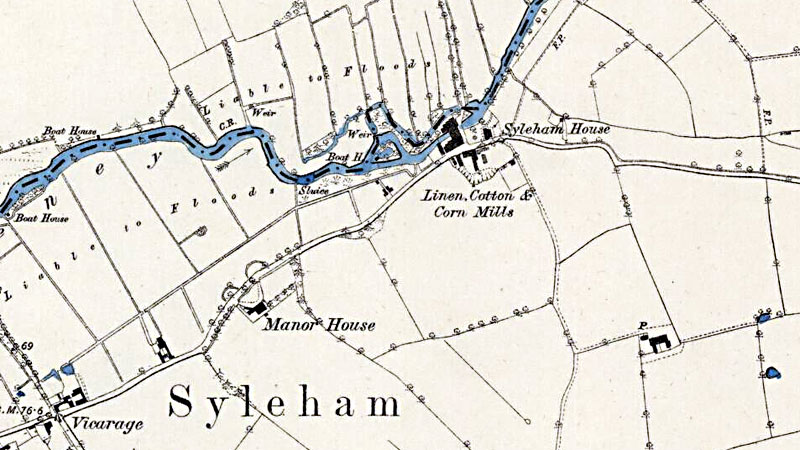 |
O. S. Map 1884 |
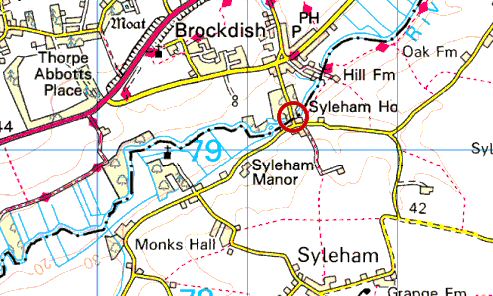 |
|
O.S. Map 2005 Image reproduced under licence from Ordnance Survey |
|
Kirby's map
1736 |
| If you have any memories, anecdotes or photos please let us know and we may be able to use them to update the site. By all means telephone 07836 675369 or |
| Nat Grid Ref TM213792 | Copyright © Jonathan Neville 2004 |